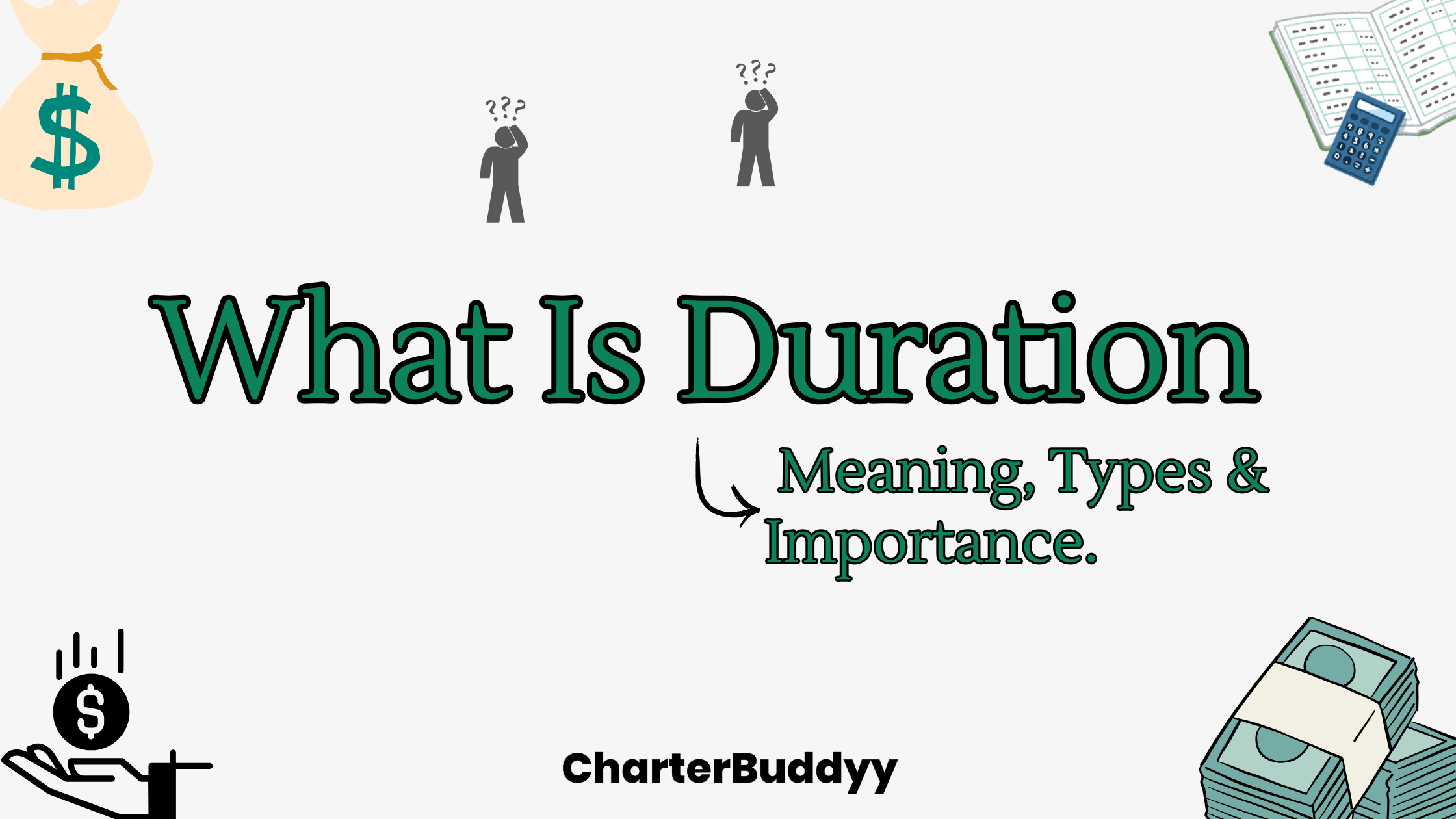What Is Duration: Meaning, Types & Importance.
Home » What Is Duration: Meaning, Types & Importance.

One of the most important concepts in fixed income, Duration is a fundamental concept in bond investing that measures a bond's sensitivity to changes in interest rates.
What is Duration?
In simple terms, duration tells us the percentage change in a bond's price for a 1% change in interest rates. It is a crucial metric that helps investors understand how much a bond's price will rise or fall as interest rates fluctuate.
For example, if a bond has a duration of 5, it means the bond’s price will decrease by approximately 5% for every 1% increase in interest rates, and vice versa.
Why is it Called 'Duration'?
The term "duration" originates from the Macaulay duration calculation, which measures the weighted average time until a bondholder receives all future cash flows (coupons and principal).
Weighted average time is the average amount of time it takes to receive all the cash flows of a bond, weighted according to its importance.
Macaulay duration is calculated in units of time (years), and the term "duration" became widely adopted.
Even when newer metrics like modified duration and effective duration emerged to measure price sensitivity rather than time, the term "duration" remained for consistency.
Types of Duration
There are several types of duration, each serving a specific purpose in fixed-income analysis:
Macaulay Duration:
Modified Duration:
Effective Duration:
Key Rate Duration:
Expressed in years, Macaulay’s Duration represents the weighted average time until a bondholder receives cash flows. Calculating it is a long process and it does not measure the sensitivity of a bond’s price to a change in interest rates.
We have written an entire blog on understanding Macaulay's duration. Click here to check it out.
Measures a bond’s price sensitivity to interest rate changes.Calculated by dividing the Macaulay duration by (1 + YTM/n).
Expressed as a percentage change in price. This is an accurate measure of interest rate risk as it shows the changes to a bond’s price due to interest rate changes.
Click here to learn more about the modified duration.
Used for bonds with embedded options (bonds with call or put options).Captures how bond prices react to interest rate changes when cash flows may vary.
Cashflows [in the form of interest and principal] are not certain for such bonds due to the added call or put option. Effective duration is hence useful for measuring such uncertainty.
The other concepts of duration measure the price change of a bond to the change in yields along the entire yield curve. It assumes that all the yields move at the same time, which is not the case in real life.
Remember, the yield curve plots current interest rates, basically the yields of bonds along with their specific maturity.
Key rate duration on the other hand measures a bond's sensitivity to changes in specific points along the yield curve rather than a parallel shift in rates.
Why is Duration Important?
Duration plays a critical role in bond portfolio management and risk assessment for several reasons such as:
Interest Rate Risk Management:
Portfolio Matching:
Comparing Bonds:
Yield Curve Analysis:
Duration helps investors anticipate how much their bond portfolio will fluctuate with interest rate changes. Longer-duration bonds are more sensitive to interest rate changes, while shorter-duration bonds are less volatile.
Investors often align the duration of their bond portfolio with their investment horizon to minimize risk. This is known as immunization.
Duration provides a standardized way to compare bonds with different maturities, coupon rates, and cash flow structures.
Key rate duration helps identify risks tied to changes at specific points on the yield curve, improving risk assessment for complex portfolios.
Conclusion
Understanding duration is essential for fixed-income investors seeking to manage risk and optimize returns.
By recognizing the different types of duration and their applications, investors can make informed decisions when constructing their bond portfolios.
Whether you're a CFA candidate or a finance enthusiast, understanding the concept of duration is key to navigating the world of fixed-income investments.
Check out our blogs on CFA here!
Table of Contents
- What is Duration?
- Why is it Called 'Duration'?
- Types of Duration
- Why is Duration Important?
- Conclusion

